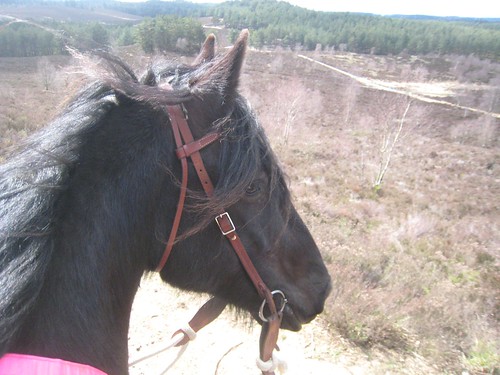Anybody who has bought a bridle in this country in the last few years will be aware of the baffling selection of nosebands available to you. In fact one would probably need to go to a western tack store to find one without and there aren’t a whole lot of those in the home counties.
The main purpose of most noseband designs is to hold the horse’s mouth closed. In some cases there is a safety reason for this- if your horse somersaults at speed and their mouth is open then there is a risk of a broken jaw, so for hunting or riding cross-country there is a clear and sensible reason for having a tightly fitted noseband. Most of the time, however, that isn’t how I see them used – mostly they are utilised to stop the horse opening their mouth in response to the bit.
To my mind, this is using a physical mechanism to prevent the horse expressing their feelings about the bit, using physical resistance to counteract the horse’s physical resistance. I have no disagreement with the use of bits – they are a great tool that allows us amazingly subtle communication with our horses – but I place a lot of emphasis on teaching a horse to carry the bit and to be comfortable and willing following the rein. If a horse is gaping their mouth open when the bit is applied or getting their tongue over it they are showing a lack of understanding.

If you are riding with a bit then it is so much easier to develop relaxation in the mouth and on through the rest of the body if the horse understands the bit and follows it willingly. This is part of the foundation that every riding horse should have and unfortunately it is one of the parts that is missing most frequently. When a horse is really carrying the bit correctly they will lift it and hold it in place with their tongue, putting it in the most comfortable place in their mouth and it is then easy for them to respond to the most subtle signals. It seems to me that a horse who is doing that is really taking responsibility for their end of the rein so as long as I take equal responsibility for my end we have a lot of communication available to us.
I don’t use a noseband at all – this is something that I take from the western side of my riding background – but I know a lot of people like the look of them on their horse. That is as good a reason as any to use a piece of equipment; by all means have it there but leave it loose and treat it as decoration.